Uttar Pradesh
As Encephalitis Deaths In UP Near Zero, Yogi's Next Task Is To Confront Residual Disabilities In Children — Ground Report From Gorakhpur
Ankit Saxena
Oct 24, 2024, 02:44 PM | Updated Nov 13, 2024, 02:28 PM IST
Save & read from anywhere!
Bookmark stories for easy access on any device or the Swarajya app.
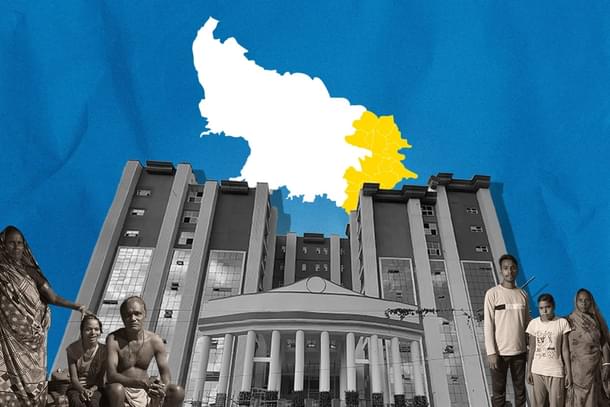
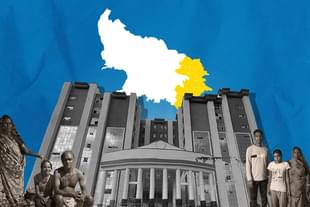
For decades, every year from June to September, families in Gorakhpur division and neighbouring parts of eastern Uttar Pradesh braced themselves for the dreaded outbreak of Japanese Encephalitis (JE) and Acute Encephalitis Syndrome (AES) — diseases that primarily affect children.
Those months have long been a time of fear and chaos in this region, as JE ravaged communities. Uttar Pradesh once accounted for 75 per cent of India’s total cases!
At the heart of this scourge lay Baba Raghav Das (BRD) Medical College in Gorakhpur city, a lifeline for thousands of families across Uttar Pradesh and neighbouring Bihar, who flocked to this facility in the hope of saving their children.
Between 2005 and 2018, Uttar Pradesh reported a staggering 47,509 cases of encephalitis, claiming 8,373 lives.
Even those who survived the illness were often left with severe disabilities or cognitive impairments, drastically changing their lives forever.
Just 4 kilometres (km) from BRD Medical College, in the village Manbela, lives 13-year-old Sushmita. She contracted JE when she was five. Though she survived the virus, which left her in a coma for three days, the past eight years have been an unending struggle for her and her family.
At her home, her 22-year-old brother tells Swarajya, "We can’t leave her alone at any time. In our family of seven, at least one person has to always be around her."
Sushmita suffers from vision problems, a lasting consequence of the virus attacking her brain. She also experiences regular convulsions, which can strike at any time, day or night.
Despite the challenges, her mother decided to send her to the local government school, hoping for improvements.
She tells Swarajya, "Sushmita has joined the school, but we never know when the seizures will come. When they do, her health gets worse for months afterwards. She hasn’t been to school these last three months. Such gaps are there always in her education."
Sushmita, sitting quietly beside her mother, expresses her dream of becoming a doctor one day. “But for long I have been in the seventh grade. I have not been able to understand anything in school," she says.
For her exams, her classmates write answers for her. Her mother says Sushmita is three years behind, as per her age. She can understand simple things, but she can’t learn as quickly as other children her age.
The family takes her to the hospital whenever her condition worsens, but the visits offer little long-term relief.
"They give her medicines for a month, but there’s no real treatment for her condition," her brother explains. "After the hospital's medicine runs out, we have to buy it ourselves. This has been the routine for years now. The doctors just increase the dosage each time."
He adds, "There should be more government support for kids who have been left disabled by this disease. We are not the only ones. There are many families like us."
For these families, the battle against encephalitis is far from over.
There are many like her — children who survived encephalitis but are now living with disabilities, tucked away in rural homes with limited access to specialised care.
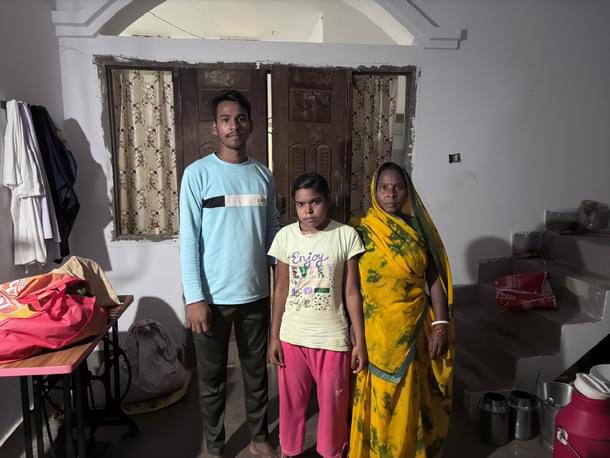
The Encephalitis Crisis In Uttar Pradesh
In eastern UP, two forms of encephalitis pose serious health challenges — mosquito-borne JE and AES.
Children affected by AES show symptoms similar to JE, such as high fever and seizures. However, the cause of AES is often contaminated water.
Gorakhpur, in the Terai region of India, has faced encephalitis outbreaks since 1978, as its humid, rainy climate creates perfect conditions for mosquito breeding.
The disease mostly affected low-income, rural communities, where limited healthcare and poor sanitation made the problem worse.
"We called it the ‘season of death’," recalls 75-year-old Dr R N Singh, one of the earliest paediatric doctors in BRD Gorakhpur medical college.
"There were deaths every day in the wards. There were no other hospitals, and parents had no choice but to rush their children to BRD. The worst year was 2005, when the outbreak hit its peak."
That year, 5,737 people were affected in seven districts of eastern Uttar Pradesh, and tragically, 1,344 children lost their lives.
In the face of rising cases, Dr Singh and other local activists took matters into their own hands. “We started our own awareness campaigns and demanded government action,” he explains.
"Our three main demands were mass vaccination, a virology lab in the district, and aerial fogging to kill mosquitoes.
“We prepared a document, named as the national encephalitis eradication programme (NEEP), and stressed prevention over treatment, calling for cleanliness drives, eliminating mosquito breeding grounds, ensuring clean drinking water, and mass vaccination in rural areas.”
Yet the situation remained grim for years. "The beds were always full, and often, by the time test results came from the virology lab in Pune, it was too late. The children would either recover, die, or be left with lifelong disabilities," recalls Dr Singh.
A virology lab was opened in Gorakhpur, and a vaccination campaign targeted 60,000 children. However, not all areas received vaccinations.
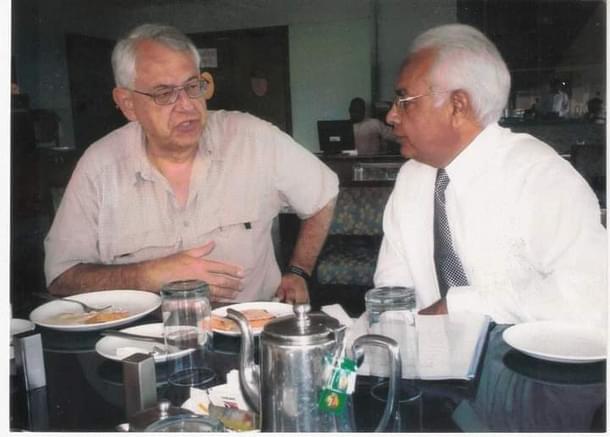
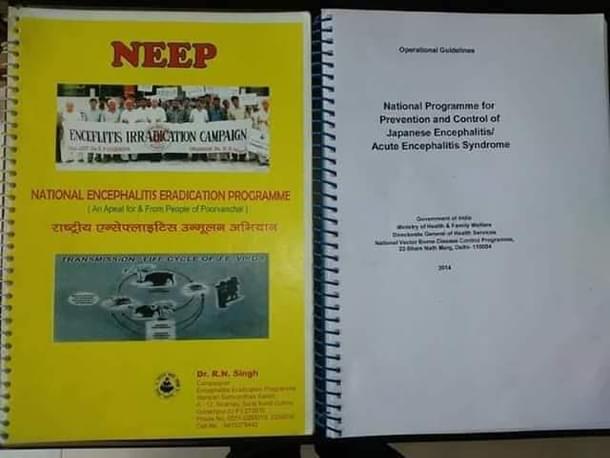
It was not until 2018 that actions significantly increased, including mass vaccination drives and a serious consideration of recommendations to control the disease.
“Since then, we can say, to this year that the situation has been contained to more than 95 per cent.”
Yet encephalitis remains a challenge in several other states: Bihar, Assam, West Bengal, and more than 10 others.
“In Gorakhpur, the Yogi government focused on this issue and did great for the poor. However, similar attention and resources are not available in other states. I believe this needs to become a national-level mission, following the successful model used in UP, to ensure that similar protocols are implemented across the country.”
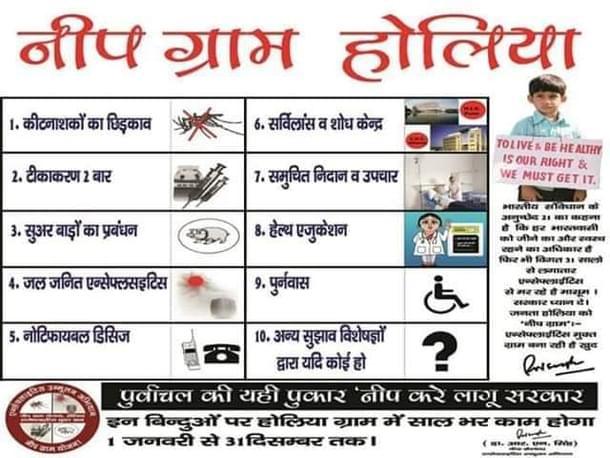
The Shift In State Action After 2017
This year, government records show that deaths due to AES have dropped to just one, while deaths from JE have fallen to zero.
According to state data, AES cases have decreased from 764 in 2017 to just 47 in 2024. Angad Singh, the District Malaria Officer in Gorakhpur, shared this data with Swarajya.
To reach here was a result of six years of dedicated public health initiatives and a clear focus on preventive measures of enhancing water sanitation, strengthening health departments, and improving healthcare facilities in rural areas.
This also includes the introduction of specialist doctors at the micro level of Primary Health Centres (PHC) to the establishment of a new 500-bed facility at BRD Gorakhpur.
Swarajya's ground coverage in the early years of these initiatives provides full insights on the action plans. (Read here, here, and here.)
Social activist Rajesh Mani tells Swarajya that the focus under Chief Minister Yogi Adityanath has been to integrate all departments to address every possible gap.
“Over the years, there have been issues with government handling, from cleanliness to awareness to treatment. Shifting responsibilities led to systemic failures. Each year, local newspapers had a boxed section on the front page with the number of cases and children who died,” he adds.
“The Yogi administration made it a point to hold all officials accountable for any lapses in this mission. For six years, actions have remained consistent and on point, as the CM also was aware of the gaps over the years in his own bastion.”
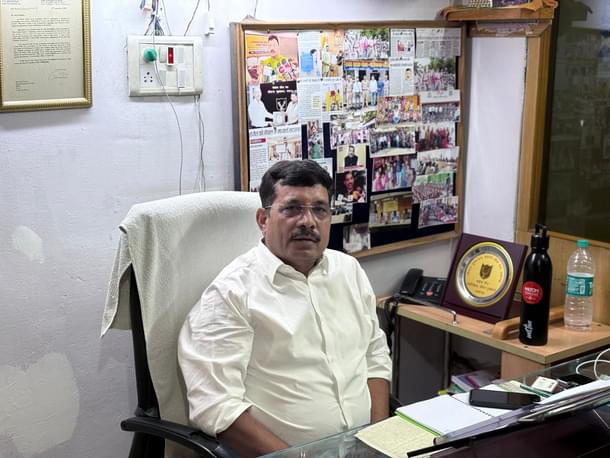
Experts agree that while eradication is unlikely due to various underlying causes, prevention and proper management of treatments remain essential.
“Supporting this large-scale initiative, multiple micro-level efforts contributed to this success,” says Siddheshwari, nodal officer, JE/AES Gorakhpur. “However, these actions must continue for another decade to ensure sustained control over the disease.”
— Previously, the BRD hospital was the epicentre of medical care for the disease, but the establishment of Pediatric Intensive Care Units (PICUs) across districts has enabled early detection and treatment.
— Additionally, every year, doctors are being trained to serve at PICUs, and as a result, all medical facilities are now better equipped to handle cases at early stages, reducing the number of cases reaching BRD.
— Through the Dastak programme, ASHA and Anganwadi workers were also incentivised to continue their efforts in door-to-door campaigns.
An example of this is in Kushinagar district, located over 70 km from BRD.
Shambhu Chauhan recalls how timely treatment saved his son in 2019. The boy had been paralysed due to high fever, but with healthcare available on the ground, including regular checkups, dietary guidance, and medications provided at home, he regained nearly all of his physical abilities.
Today, Shambhu's son is back in school, and the entire village acknowledges the efforts that have been in place since 2018.
With these initiatives and infrastructure improvements, recovery rates have increased drastically.
However, those who know well about the disease and its residual problems believe that long-term disabilities in children who suffered previously should be brought to the mainstream — calling for support and facilities to help them fully reintegrate into society.
Residual Problems Persist
In the village where lives Sushmita, 16-year-old Rinki faces an uphill battle.
Her father tells Swarajya, "When she was around four or five years old, she had brain fever twice. Since then, her eyesight has almost gone; she suffers from constant seizures and is always drooling (sialorrhea)."
Rinki's life has been confined to her small home. A few years ago, she tried going out, but after a severe seizure, she stopped. As she grows older, she has become more aware of the dangers — she fears falling or getting hurt.
"But there’s been no support from the government. We have to manage everything. For the past five years, we’ve even stopped going to the hospital. This is the life we expect now," her mother says.
"Many people, including students, came before Covid, bringing big cameras and microphones, interviewing us. But nothing changed for our daughter."
During Swarajya’s conversation with doctors at the BRD hospital, on sharing details of Sushmita and Rinki, they were able to identify their conditions.
They said that while Sushmita could still benefit from rehabilitation, Rinki's situation was far more challenging. However, they both need to reach out to the hospital.
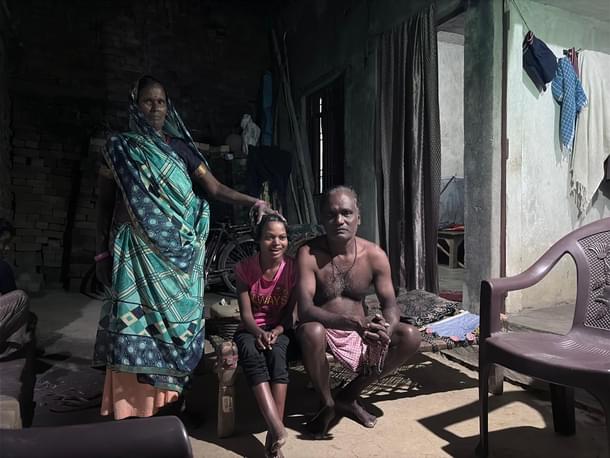
While the government has made remarkable progress in controlling encephalitis outbreaks, the next step should be to focus on children like Rinki and Sushmita, who have been left dealing with the long-term effects of JE.
Along with continuing the action plans to combat the disease, it is crucial to now act on the needs of these children, who have suffered for years from its lasting impacts.
Officials and doctors at the government level tell Swarajya that there is a Physical Medicine and Rehabilitation (PMR) centre at BRD Medical College and a Composite Regional Centre (CRC) for the disabled.
However, a well-defined system or dedicated help desk specifically for children affected by encephalitis for years is absent.
Doctors mention that the only opportunity to identify and refer these children to rehabilitation services, such as physiotherapy, speech therapy, and other exercises, is during hospital visits.
However, these facilities are not as actively used or taken as seriously as the action plan that was implemented to contain the disease. As a result, a similar structured protocol is needed in the next phase of the government’s plan.
Next Steps For The Administration
Gorakhpur has several facilities in place to address disabilities, including the CRC, which was opened in 2018.
As per the locals, the facility was earlier planned to open in Azamgarh but was moved to Gorakhpur, considering the larger share of disabled kids on account of JE. However, according to those involved, not much has been achieved in terms of rehabilitation of the kids.
Speaking on the condition of anonymity, they tell Swarajya, "Only one camp was held focussing on JE patients a few years ago. Even those who registered never really came forward."
Many of these families come from poor, backward regions across eastern Uttar Pradesh, and it is difficult for them to travel to Gorakhpur for regular treatment.
"This isn’t just a one-day consultation or visit. Rehabilitation is a process where these kids need consistent care over weeks, sometimes months, to help them perform basic activities independently. However, parents can’t afford to bring their children to Gorakhpur for extended periods, even if the treatment is free," they added.
Medical professionals highlighted the need to address these concerns at the local level.
— The Block Resource Centres (BRCs) and District Disability Rehabilitation Centres (DDRCs) should be equipped with the capacity to handle these cases.
— With better facilities at the local level, children could visit centres closer to home rather than travelling long distances.
— Just like the Dastak project, which successfully reached villages to control the spread of the disease, a similar model could be used to identify children suffering from disabilities and spread awareness about rehabilitation services in rural areas.
— The government has already provided resources and equipment for disabled individuals, and these should be distributed at the micro level to ensure they reach the villages.
— Teachers and schools are a key source to identify issues with kids, as well as help in rehabilitation and training programmes.
Officials agree that while not all children can be fully treated, the goal is to take them to a point where they can manage basic tasks independently. For those who can recover, regular treatment and support at the village level could help bring them back to normalcy over time.





